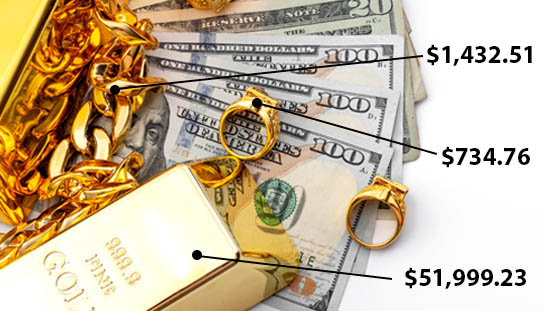Comprehending the Economic Implications of Charges and Expenditures in Precious Metal Acquisition and Pawning Operations
Comprehending the Economic Implications of Charges and Expenditures in Precious Metal Acquisition and Pawning Operations
Blog Article
Au has been a valuable asset for centuries, serving as a method of currency, investment, and ornamentation. When buying or pledging gold, it is crucial to understand the financial consequences of different fees and charges that can influence the total cost and value of the deal. These fees can significantly impact how much cash one gets when pawning gold or how much is paid when purchasing it. Being aware of these fees can aid consumers make informed decisions and avoid surprising costs.
When purchasing gold, buyers should be aware of several types of fees. One common fee is the markup, which is the discrepancy between the bulk price and the retail price. Retailers often add a premium to account for business costs and profit margins. Additionally, there may be sales tax imposed during the transaction, depending on local laws. Consumers should also consider other potential fees, such as delivery fees if the gold is being shipped. Understanding these costs in advance can avert surprises and help buyers plan properly.
Pawning gold also comes with its Full Article own set of fees and costs. Pawn shops typically impose interest on loans secured by gold goods. The interest rate can vary greatly among different pawn shops, so it is important to compare rates to locate the best deal. There may also be holding fees if the pawned gold is kept for an prolonged period. Furthermore, pawn shops may levy fees for appraisals or administration the loan, which can add to the total cost. Knowing these fees can help individuals make cash for gold buyers smarter financial decisions when pawning their gold.
Another crucial aspect to take into account is the weight and quality of the gold being bought or pledged. The value of gold is determined by its present market price, which fluctuates based on financial conditions, demand, and availability. Additionally, gold items are often evaluated in karats, which indicates the fineness of the metal. Higher purity gold typically fetches a higher price. Understanding how these elements affect the monetary outcome of gold transactions is important for consumers, as they can affect the fees charged and the ultimate amount obtained or paid.
In summary, being informed about the fees and costs associated with buying and pledging gold can lead to better monetary decisions. Whether buying gold for financial growth or pawning items for rapid cash, individuals should take the effort to research and comprehend the various costs involved. This awareness can help buyers navigate the complexities of gold deals and ensure they maximize their monetary gains while minimizing unnecessary outlays.